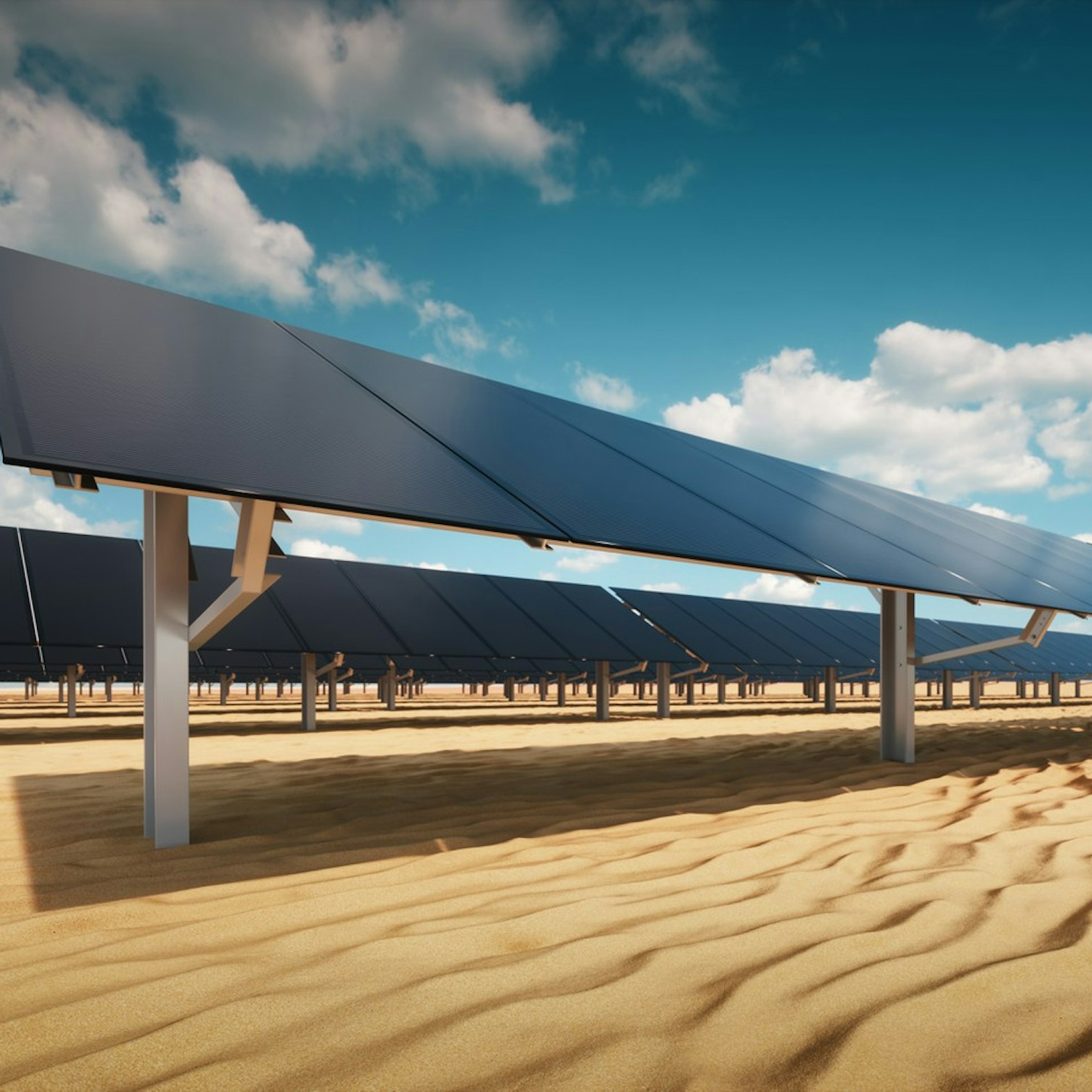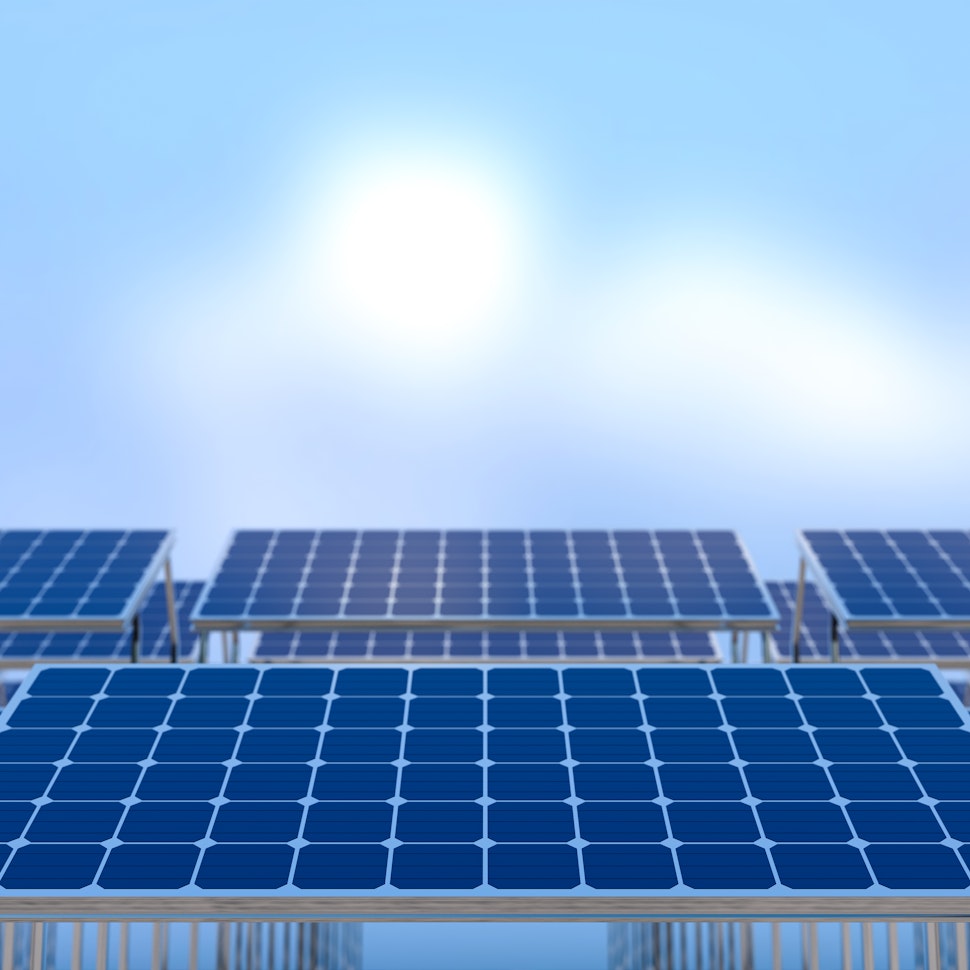- Solar energy blog
- Utility-scale solar plants in desert climates
Utility-scale solar plants in desert climates

Content
Deserts would appear to be the perfect place to install a solar photovoltaic (PV) plant — they have high levels of solar irradiance and no limitations on space to install panels. And yet, there are numerous challenges to locating utility-scale solar plants in desert environments that project developers must consider and navigate.
In this article, we look at the reasons for installing solar PV plants in desert climates, as well as the pros and cons to consider and solutions to overcome the challenges.
The business case for desert PV plants
Demand for renewable energy is rising around the world as governments and businesses move away from fossil fuels — a trend that has only gained impetus with the energy crisis prompted by the Russia-Ukraine conflict.
There are opportunities in developing regions such as Africa and India, where economic development is driving up electricity access and consumption from industrial users. There, desert PV installations can make good use of land that is not suitable for residential, agricultural, or other types of development.
Bhadla Solar Park in the Thar desert in India is one of the world’s largest solar farms, housed in a landscape that’s described as an inhospitable place to live because of its hot, sandy, and arid climate. It might be inhospitable for residential purposes, but has great potential for solar power. The 2.2GW plant consists of over 10 million PV panels sprawling across more than 22 square miles.
PV technologies also offer a more cost-effective and safer alternative to oil, which is unsafe to extract and contributes further to pollution in the form of oil-fired generators.

Take a look at the largest PV plants in the world and some upcoming projects that will add further to global solar capacity. Download our free eBook today!
Advantages of solar plants in deserts
There are some clear benefits to locating solar plants in desert climates for project developers to consider.
High solar irradiance. Irradiance measures the total power density of sunlight that falls on an area. The higher the level of irradiance, the higher the output current, and in turn the more power that is generated.
Ample space. Desert projects do not have the limitations in terms of rooftop space or land boundaries that urban projects encounter.
Topography. Desert land is relatively flat and sand is easier to move than compacted or rocky soils, enabling developers to build a project to their specifications with fewer obstacles.
Fewer regulations. There are fewer regulations imposed on solar parks in deserts compared with building in other environments.
Fierce competition among PV developers and IPPs for winning projects makes having an accurate irradiance and meteorological data stream key. Join us discussing how to develop a bankable PV project with high-quality irradiance data in this on-demand session. Watch it now!
Disadvantages of solar plants in deserts
The advantages of installing solar capacity in desert environments are clear, so why aren't there more large-scale PV plants in deserts across the world?
Lack of infrastructure. Installing millions of solar panels and the associated equipment requires roads, storage, and transport vehicles, as well as electricity grid connections — none of which are present in vast desert areas.
Distance from consumption. Desert regions by their nature tend to be a long distance from residential and industrial centers where electricity is consumed. This means there is little to no transmission and distribution capacity and long lines must be installed to connect solar parks to the grid, which are expensive to install.
Labor issues. As they are a long distance from towns and cities, there is a lack of local labor and harsh conditions can make it difficult to attract workers.
High temperatures. Solar panel efficiency falls in conditions where there is high solar irradiance and air temperatures. Output efficiency falls further from peak output for each 1°C temperature increase above 25°C. High temperatures can cause solar module degradation that reduces performance.
Challenging environment. While sand is easy to move, it can be difficult to build on and it also causes shading when it collects on solar panels. A desert landscape can pose even greater obstructions if the sand turns to mud. Sand storms can also damage solar panel glass by blowing sharp grains of sand across them.
Lack of water. The absence of water in the desert makes construction projects challenging. It also makes it difficult to keep solar panels clean of sand.
Political instability. From the points above, it becomes clear that the desert regions best suited to PV plants are those as near an urban area as possible. Unfortunately, these deserts and urban areas tend to be located in regions where political unrest is common, increasing investment risk.

Solutions for desert solar PV projects
So are desert-based PV projects an unattainable ideal? Not necessarily. Here are some ways to tackle the challenges of installing solar PV in deserts to make the projects viable.
Install panels designed for harsh conditions. Some solar panel manufacturers produce heavy-duty panels that provide extreme heat resistance and low degradation losses.
Use dry cleaning methods. A lack of water need not prevent solar panel maintenance and cleaning. Pressurized air can be used to keep solar panels clean rather than water to ensure that they continue to generate power efficiently.
Offer workers incentives. Rather than paying workers a local wage, a developer can pay them the equivalent wages they would pay in their home country. For example, a German company would pay workers in the Sahara the amount they would pay workers in Germany. This would attract local workers who will earn more than local wages and could encourage overseas workers to relocate.
Invest in grid infrastructure. The transition to renewable energy requires new power grid solutions and the construction of transmission lines to connect new generation capacity to the grid. This is often in remote locations, whether in deserts or anywhere else.
Location selection. Lastly, not every desert region has the appropriate conditions for solar plants — developers should study the conditions of potential locations and be selective about the site they choose.
RatedPower can model desert projects
Locating a solar project in a desert environment requires careful planning to ensure it will generate a position return on investment. RatedPower platform enables you to model variables such as temperature, topography, solar panel tilt, and interconnection to estimate a project’s electricity output.
With RatedPower's functionality, you can automate various elements to optimize the project and ensure the design reaches the highest efficiency, whatever the environment.
Latest stories
Related posts
Technology and engineering
Innovation in renewable energy: Developments expected in 2025
We look at the 10 biggest renewable industry developments that are making a green future possible, including perovskite solar cells, green hydrogen, and more.
Updated 18 MAR, 25

Technology and engineering
What the future holds for the longevity and efficiency of solar panels
Tests done by the French photovoltaics group Hespul showed that the panels, installed in 1992, are still operating at an astonishing 79.5% efficiency. Read on to find out more.
Updated 4 MAR, 25

Technology and engineering
Concentrated solar: An unlikely comeback?
Once described as obsolete, the concentrated solar power market ballooned to $53 billion in 2023 and is still growing. Here’s why CSP is making a comeback.
Updated 12 NOV, 24

- RatedPower
- Solar energy blog
- Utility-scale solar plants in desert climates
